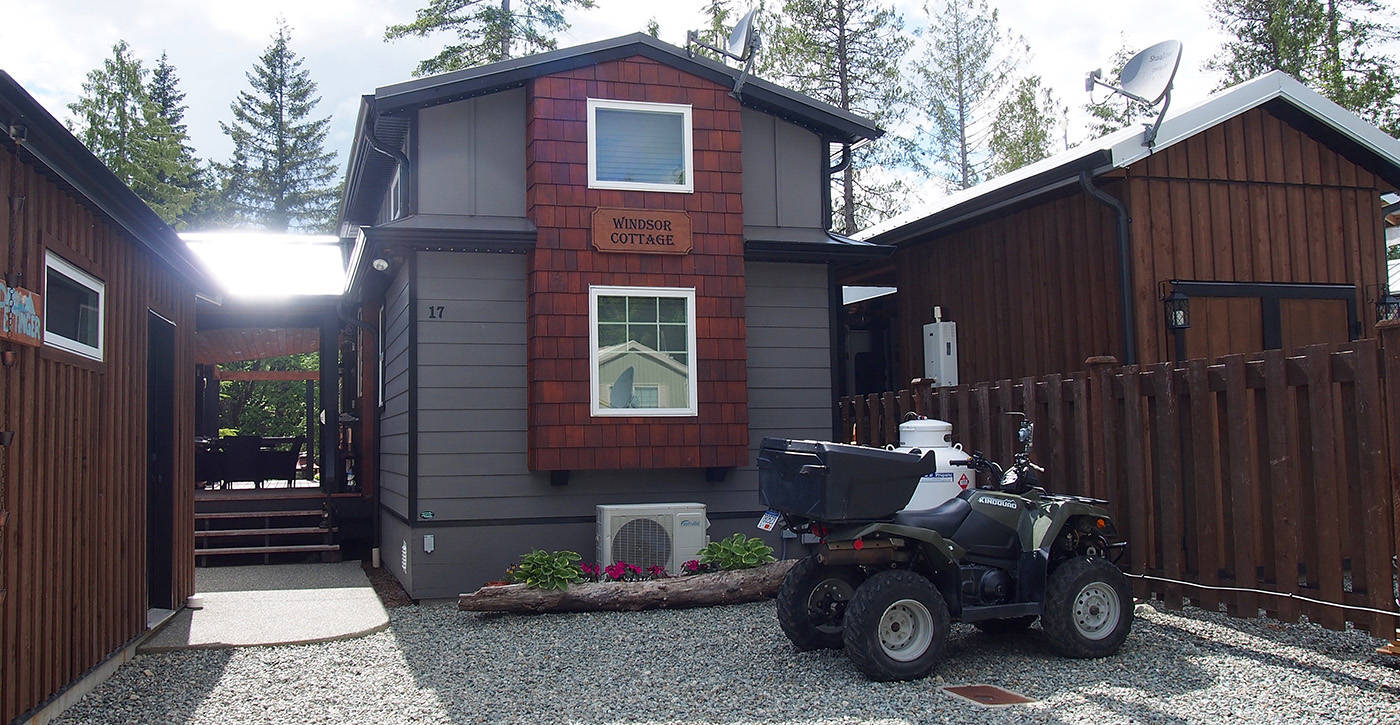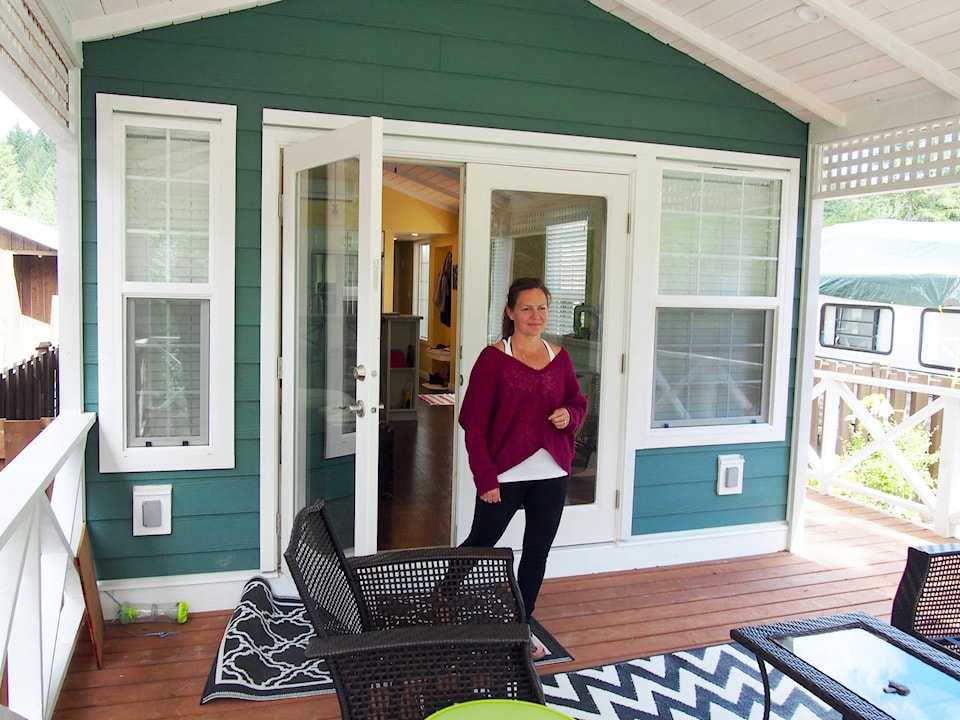BY MIKE YOUDS
Special to the News
Faced with an unprecedented crisis in housing affordability, municipalities would do well to consider the model found in tiny homes nestled along the shore of Boot Lagoon at Great Central Lake.
In the course of developing Trestle RV Park, Danielle and Mark Marley have designed and built a series of recreational mobile homes they see as prototypes for residences in urban settings.
“They offer a really affordable, non-permanent solution for people who want to have recreational property,” Danielle said while showing some of the eight units constructed by their tandem enterprise, Rolling Homes.
“A lot of people think of these as tiny homes.”
They are not the tiniest of mobile homes often seen on HGTV, though. Those camper-sized homes could not be plunked down on a city lot because they don’t have proper certification.
The Great Central homes were designed and built to fill a specific niche at Trestle RV Park, the first phase of the Marley’s plans on their 40-hectare property at the lake. They had their first off-site client at Cowichan Lake. Another client has ordered one as a float home.
“I think it has potential everywhere. There are tiny homes all over,” Danielle said.
Exceeding B.C. Building Code standards and equipped with CSA approval, the units raise the bar for recreational mobile homes with modern design features including high ceilings, lofts and open-concept living areas within a 500-600 sq. ft. floor space. They also feature spacious decks overlooking the lagoon — waterfront property in an era when the cost exceeds what many people could afford.
The one- and two-bedroom freehold strata homes range in price from $125,000 to $160,000. Recreational zoning means that owners can’t use them as full-time residences though they can access them year-round. Not surprisingly, all of the RV park units have been snapped up.
The Marleys, who reside in Victoria, recently met with their MLA to press home the case for the Rolling Homes design as a remedy for B.C.’s urban housing crisis. Their cost comparison suggests the mobile homes could be built for less than half the cost of a conventional city home. They propose that the CSA adopt a new level of certification for tiny homes such as theirs.
“We were proposing that they should look at it as a carriage home or secondary home (on city lots),” Danielle explained. Permanent carriage homes can skewer the value of a city property, but a mobile unit would alleviate that concern, she added.
“I think it’s going to take a city to step out of the box and say, ‘We’re ready for tiny homes.’ But they have to be regulated.”
For years, the Marleys camped on the lagoon at Great Central Lake at a location occupied in the early 20th century by a floating hotel known as The Ark. When the property was put up for sale 15 years ago, they jumped at a chance to make it their own. Mark is a builder and Danielle obtained her realtor’s licence to round out their skill set as Great Central Holdings. They’ve spent much of the last 11 years rezoning and developing the RV park.
“We also really fell in love with Port Alberni, so we want to support business locally as much as we can,” Danielle said.
Most of their recreational property clients have been from Victoria but a third of them are similarly enthused with Port Alberni and, like the Marleys, plan to resettle here.
“Lifestyle-wise, we’re looking to downsize our family home. We’re looking for a healthier life and Port just lends itself to that.”

